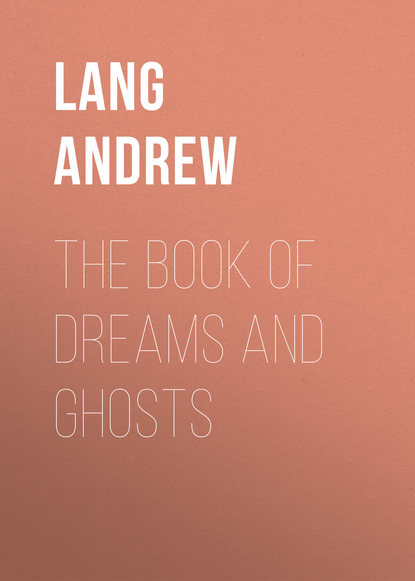По всем вопросам обращайтесь на: info@litportal.ru
(©) 2003-2025.
✖
The Book of Dreams and Ghosts
Настройки чтения
Размер шрифта
Высота строк
Поля
This account is abridged from Mr. Walter Leaf’s translation of Aksakoff’s Predvestniki Spiritizma, St. Petersburg, 1895. Mr. Aksakoff publishes contemporary letters, certificates from witnesses, and Mr. Akutin’s hostile report. It is based on the possibility of imitating the raps, the difficulty of locating them, and the fact that the flying objects were never seen to start. If Mrs. Shchapoff threw them, they might, perhaps, have occasionally been seen to start. S.P.R., vol. xii., p. 298. Precisely similar events occurred in Russian military quarters in 1853. As a quantity of Government property was burned, official inquiries were held. The reports are published by Mr. Aksakoff. The repeated verdict was that no suspicion attached to any subject of the Czar.
117
The same freedom was taken, as has been said, with a lady of the most irreproachable character, a friend of the author, in a haunted house, of the usual sort, in Hammersmith, about 1876.
118
Proceedings, S.P.R., vol. xii., p. 49.
119
John Wesley, however, places Hetty as next in seniority to Mary or Molly. We do not certainly know whether Hetty was a child, or a grown-up girl, but, as she always sat up till her father went to bed, the latter is the more probable opinion. As Hetty has been accused of causing the disturbances, her age is a matter of interest. Girls of twelve or thirteen are usually implicated in these affairs. Hetty was probably several years older.
120
30th January, 1717.
121
Glanvil’s Sadducismus Triumphatus, 1726. Preface to part ii., Mompesson’s letters.
122
Gentleman’s Magazine, November, December, 1872.
123
This happened, to a less degree, in the Wesley case, and is not uncommon in modern instances. The inference seems to be that the noises, like the sights occasionally seen, are hallucinatory, not real. Gentleman’s Magazine, Dec., 1872, p. 666.
124
S.P.R. Proceedings, vol. xii., p. 7.
125
Demon Possession in China, p. 399. By the Rev. John L. Nevius, D.D. Forty years a missionary in China. Revel, New York, 1894.
126
Translated from report of Hsu Chung-ki, Nevius, p. 61.
127
Nevius, pp. 403-406.
128
Op. cit., p. 415. There are other cases in Mr. Denny’s Folklore of China.
129
The Great Amherst Mystery, by Walter Hubbell. Brentano, New York, 1882. I obtained some additional evidence at first hand published in Longman’s Magazine.
130
The sources for this tale are two Gaelic accounts, one of which is printed in the Gael, vol. vi., p. 142, and the other in the Glenbard Collection of Gaelic Poetry, by the Rev. A. Maclean Sinclair, p. 297 ff. The former was communicated by Mr. D. C. Macpherson from local tradition; the latter was obtained from a tailor, a native of Lochaber, who emigrated to Canada when about thirty years of age. When the story was taken down from his lips in 1885, he was over eighty years old, and died only a few months later.
131
John Arnason, in his Icelandic Folklore and Fairy Tales (vol. i., p. 309), gives the account of this as written by the Sheriff Hans Wium in a letter to Bishop Haldorr Brynjolfsson in the autumn of 1750.
132
Huld, part 3, p. 25, Keykjavik, 1893.
133
As at Amherst!
134
Written out from tradition on 24th May, 1852. The name of the afflicted family is here represented by a pseudonym.
135
From Eyrbyggja Saga, chaps, l. – lv. Fródá is the name of a farm on the north side of Snæfell Ness, the great headland which divides the west coast of Iceland.
136
Fact.
137
Cornhill Magazine, 1896.
138
This story should come under the head of “Common Deathbed Wraiths,” but, it is such an uncommon one!











